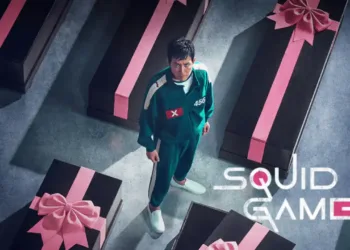Tyrant’s Realm presents a captivating tribute to PS1-era graphics, featuring low-poly models and shimmering effects that evoke a classic gaming atmosphere.
Visual options such as a CRT filter and a 4:3 aspect ratio contribute to a sense of nostalgia, although the blue tint of the CRT can sometimes be overwhelming. These elements enhance the game’s immersive retro appeal.
The game’s environments, including the grim Torture Pit and the trap-filled Royal Hunting Grounds, enrich its dark fantasy aesthetic. Deteriorating ruins and minimal environmental details amplify immersion, using ambiance to suggest a deep, haunting backstory. This visual narrative aligns well with the game’s unsettling gameplay.
The Core of Combat: Navigating Tyrant’s Realm’s Systems and Strategies
Tyrant’s Realm’s combat revolves around intentional, stamina-based mechanics, capturing the spirit of classic Soulslike games while establishing its own character. Players need to manage their stamina bar, which controls actions like attacking, dodging, and guarding.
Each choice carries significance; miscalculating stamina usage can leave players exposed during critical moments. The presence of both light and heavy attacks introduces strategic complexity, allowing players to opt for quicker strikes or slower, more powerful hits based on their position and enemy actions.
A key design feature is the emphasis on animations, requiring players to complete their actions before starting another. While this approach encourages careful decision-making, the lack of animation canceling can seem limiting, especially during frantic encounters. This design choice recalls early FromSoftware titles like Demon’s Souls, where committing to an attack heightened the tension but sometimes frustrated those used to more fluid gameplay.
Advancement in Tyrant’s Realm is linked to collecting runes and upgrading gear, creating a gratifying feedback loop. Runes provide gradual enhancements to essential stats like health, attack strength, and defense, promoting exploration and experimentation. These upgrades feel vital for overcoming tougher foes and bosses, especially as the difficulty increases.
The diverse range of weapons—spanning swords, scythes, and spears—offers significant opportunities for individual playstyle choices. Each weapon has distinct movesets, with some focusing on reach and accuracy while others shine in close combat. Nonetheless, weapon balance can vary, with certain movesets appearing awkward or ineffective. For example, scythes may have issues with hit detection, echoing similar challenges found in earlier Dark Souls titles.
Execution mechanics introduce a high-risk, high-reward dynamic to combat. Successfully timed parries activate cinematic finishers, rewarding precision but severely penalizing mistakes. This feature evokes the intense satisfaction of games like Sekiro: Shadows Die Twice, though it lacks refinement in this context. Tyrant’s Realm presents a fulfilling yet occasionally uneven gaming experience that values patience and adaptability.
Endless Possibilities? The Procedural Depth of Tyrant’s Realm
Tyrant’s Realm embraces its roguelite origins with procedurally generated levels, creating a combination of unpredictability and structure that keeps gameplay feeling fresh. Each level is assembled from a collection of tilesets, enabling diverse layouts while preserving thematic coherence.
Environments like the grim Torture Pit and the fiery depths of the Ashen Forge stand out, each filled with distinct hazards and enemy setups. Despite the procedural aspect, the overall level designs often reflect iconic areas from Soulsborne games, offering familiarity within the randomness.
Randomized loot and enemy placements further solidify the game’s roguelite characteristics. Each run presents new chances to uncover weapons, armor, and resources, establishing a dynamic progression system. The variety in loot can sometimes feel constrained, as certain gear and item types frequently reappear, reducing the sense of novelty over time. Enemy placements follow a similar pattern: while initial runs provide surprises, repeated encounters reveal trends that lessen their unpredictability.
The Merchant’s Lounge serves as a central mechanic linking progression to strategic spending. After each level, players must use all collected gold for upgrades, gear, or small enhancements to permanent stats. This mechanic introduces tension, as players must balance immediate needs with future benefits. The gradual nature of economic progression can be frustrating, particularly when sought-after gear blueprints necessitate multiple runs to obtain.
The game’s color-coded gear system adds an interesting twist, promoting experimentation with builds. Players can invest in upgrades associated with specific gear colors, enhancing all items of that category for the duration of a run. This approach has its drawbacks; while it encourages creative playstyles, the power disparity of certain items—like armor sets that provide passive healing—can diminish late-game challenges. Despite these issues, Tyrant’s Realm effectively weaves roguelite elements into its core gameplay loop, offering a mix of strategy and unpredictability that keeps players invested.
Balancing the Brutal: How Tyrant’s Realm Welcomes and Tests Players
Tyrant’s Realm presents a more approachable version of the Soulslike formula, making it an attractive entry point for those new to the genre. Unlike its more punishing inspirations like Dark Souls or Sekiro: Shadows Die Twice, the game moderates its difficulty, ensuring that failure serves as a learning experience rather than an overwhelming obstacle.
This method, paired with its roguelite mechanics, mitigates the harsh reputation of Soulslike titles by allowing players to retain upgrades between runs, promoting a sense of gradual growth.
The technical flaws in combat can detract from the overall experience. Issues with hit detection, especially with unconventional weapons like scythes, disrupt the combat flow and can lead to frustrating moments. While parrying offers satisfying execution opportunities, it feels less refined compared to the fluidity of dodging. This imbalance encourages players to adopt a more evasive style, constraining the variety of tactics available.
The initial runs provide a well-balanced challenge, rewarding players who understand enemy attack patterns and time their actions effectively. As players unlock higher-tier gear and stat upgrades, the difficulty tends to decrease. Overpowered items, such as certain armor sets that provide passive healing, can make late-game combat feel less challenging, heavily favoring the player.
This fluctuation in difficulty affects long-term engagement. While early runs are tense and rewarding, later playthroughs can lose their intensity, as progression systems diminish the need for careful strategy. This reduction in sustained challenge prevents Tyrant’s Realm from achieving the relentless tension and mastery-driven satisfaction found in the top Soulslike games.
Foes and Finales: The Highs and Lows of Tyrant’s Realm’s Adversaries
Tyrant’s Realm fills its dark fantasy setting with a variety of enemies, each introducing distinct challenges to its combat mechanics. Standard foot soldiers wield dull shortswords, acting as early-game opponents with predictable behaviors.
In contrast, unique figures like kitchen staff wielding knives and fish—who humorously heal themselves during battles—bring a sense of humor and unpredictability. Others, such as nimble kasa-wearing cartwheelers, focus on agility, compelling players to adjust their timing and strategies.
The presence of elite variants, identifiable by their glowing red eyes, adds another layer of tension. These foes deal more damage and can take greater hits, creating high-stakes encounters that require accuracy and strategic planning. While these designs introduce variety, their effect lessens over multiple runs as the absence of fresh mechanics diminishes the challenge they initially pose.
Boss battles stand out in Tyrant’s Realm, featuring visually impressive designs and mechanics that pay tribute to the best in the genre. Encounters like the Disgraced Chieftain Elephant combine spectacle with chaos, requiring players to dodge minions while striking the towering enemy. Similarly, the Old Huntsman compels players to deal with ranged crossbow attacks from above, necessitating precise movement and timing.
The final battle with the titular Tyrant, however, lacks the weight one would expect from a climactic showdown. Spanning three phases, the fight does not evolve in a meaningful way, leaving players feeling unsatisfied. This inconsistency in boss design reflects the game’s difficulty in sustaining engagement during its later stages, a notable shortcoming in an otherwise commendable effort to create memorable adversaries.
A Realm of Repetition: Exploring Tyrant’s Realm’s Staying Power
Tyrant’s Realm relies heavily on procedural generation to maintain its replay value, offering randomized level layouts, enemy placements, and loot drops with each playthrough. While this method ensures that no two experiences are alike, its effect on long-term enjoyment is diminished by the game’s limited variety in assets.
The biomes, although visually distinct, adhere to predictable patterns that become familiar after several runs, decreasing the sense of exploration that roguelite games typically provide.
The assortment of randomized elements, including loot and enemy types, also lacks the depth needed to sustain consistent excitement. Many weapons have similar movesets, and the scarcity of meaningful upgrades can make initial progression feel monotonous. These limitations restrict players’ opportunities to try out new strategies, which is a major attraction of this genre, seen in titles like Hades or Dead Cells.
The introduction of higher difficulty modes seeks to prolong the game’s lifespan by adding tougher enemies and more punishing mechanics. While these adjustments can be engaging for a short time, they do not introduce fundamentally new challenges or enhance existing systems in significant ways. This leads to diminishing returns, as players encounter familiar situations that are simply more difficult.
Additionally, Tyrant’s Realm does not offer post-game content that notably alters the experience, such as new biomes or unlockable mechanics. The lack of fresh objectives or innovative features after several runs emphasizes the game’s difficulty in maintaining its initial momentum, leaving players wanting a more fulfilling endgame experience.
A Mixed Legacy: Tyrant’s Realm’s Successes and Shortcomings
Tyrant’s Realm excels in creating a nostalgic visual style that distinctly differentiates it. Its PS1-inspired graphics, featuring low-poly models and shimmering textures, evoke retro gaming charm while maintaining a cohesive aesthetic that complements its dark fantasy atmosphere.
Environments like the Torture Pit and Royal Hunting Grounds feel immersive and atmospheric, with haunting details that draw players into a grim and mysterious world.
The combat system is another highlight, merging the deliberate pacing of a Soulslike with the progression mechanics of a roguelite. The ability to retain upgrades between runs alleviates the frustration often linked to traditional Soulslike titles, offering a more welcoming experience for newcomers to the genre. Execution animations and the strategic management of stamina introduce satisfying layers of complexity, ensuring that combat, while challenging, remains rewarding.
Despite its strengths, Tyrant’s Realm has several notable weaknesses. The balance of weapons and combat mechanics is inconsistent, with some movesets feeling sluggish and unexciting. This inconsistency limits the variety and enjoyment of playstyles, a significant drawback in a roguelite where experimentation should be encouraged. Problems with hit detection, especially with larger weapons like scythes, further detract from the fluidity of combat.
The game’s limited replayability also undermines its long-term appeal. While procedural generation introduces some variability, the lack of diverse gear options, repetitive biome designs, and insufficient post-game content reduce the motivation for extended engagement. Without a substantial endgame or meaningful challenges beyond the initial runs, Tyrant’s Realm has difficulty sustaining its momentum, leaving players craving more from an otherwise promising experience.
The Review
Tyrant's Realm
Tyrant’s Realm evokes nostalgia through a combination of Soulslike mechanics and roguelite progression, all presented in a captivating PS1-inspired visual style. Although its atmospheric design and approachable combat stand out, the game suffers from inconsistent weapon balance, repetitive elements, and insufficient long-term replay value. It embodies the spirit of retro gaming while facing challenges in providing a fully cohesive and engaging experience for prolonged play. Enthusiasts of the genre will appreciate its charm but might feel that its flaws restrict its longevity.
PROS
- Immersive PS1-inspired visuals and atmospheric environments.
- Accessible combat mechanics for newcomers to the Soulslike genre.
- Engaging roguelite progression with persistent upgrades.
- Varied enemy archetypes and creative boss designs.
CONS
- Unbalanced weapon movesets and inconsistent hit detection.
- Repetitive procedural generation limits replayability.
- Lack of meaningful post-game content or extended challenges.
- Underwhelming final boss encounter diminishes endgame impact.





















































